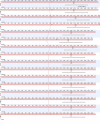Transduction as a Potential Dissemination Mechanism of a Clonal qnrB19-Carrying Plasmid Isolated From Salmonella of Multiple Serotypes and Isolation Sources
- PMID: 31787939
- PMCID: PMC6854032
- DOI: 10.3389/fmicb.2019.02503
Transduction as a Potential Dissemination Mechanism of a Clonal qnrB19-Carrying Plasmid Isolated From Salmonella of Multiple Serotypes and Isolation Sources
Erratum in
-
Corrigendum: Transduction as a Potential Dissemination Mechanism of a Clonal qnrB19-Carrying Plasmid Isolated From Salmonella of Multiple Serotypes and Isolation Sources.Front Microbiol. 2020 Apr 7;11:547. doi: 10.3389/fmicb.2020.00547. eCollection 2020. Front Microbiol. 2020. PMID: 32318037 Free PMC article.
Abstract
Antimicrobial resistance is an increasing problem worldwide, and Salmonella spp. resistance to quinolone was classified by WHO in the high priority list. Recent studies in Europe and in the US reported the presence of small plasmids carrying quinolone resistance in Enterobacteriaceae isolated from poultry and poultry products. The aims of this study were to identify and characterize plasmid-mediated quinolone resistance in Salmonella spp. and to investigate transduction as a possible mechanism associated to its dissemination. First, we assessed resistance to nalidixic acid and/or ciprofloxacin in 64 Salmonella spp. and detected resistance in eight of them. Genomic analyses determined that six isolates of different serotypes and sources carried an identical 2.7-kb plasmid containing the gene qnrB19 which confers quinolone resistance. The plasmid detected also has high identity with plasmids reported in the US, Europe, and South America. The presence of similar plasmids was later surveyed by PCR in a local Salmonella collection (n = 113) obtained from diverse sources: food (eggs), wild and domestic animals (pigs, horse, chicken), and human clinical cases. qnrB19-carrying plasmids were found in 8/113 Salmonella tested strains. A bioinformatics analysis including Chilean and previously described plasmids revealed over 95.0% of nucleotide identity among all the sequences obtained in this study. Furthermore, we found that a qnrB19-carrying plasmid can be transferred between Salmonella of different serotypes through a P22-mediated transduction. Altogether our results demonstrate that plasmid-mediated quinolone resistance (PMQR) is widespread in Salmonella enterica of different serotypes isolated from human clinical samples, wild and domestic animals, and food in Chile and suggest that transduction could be a plausible mechanism for its dissemination. The occurrence of these antimicrobial resistance elements in Salmonella in a widespread area is of public health and food safety concern, and it indicates the need for increased surveillance for the presence of these plasmids in Salmonella strains and to assess their actual impact in the rise and spread of quinolone resistance.
Keywords: Chile; Salmonella spp.; antimicrobial resistance; foodborne diseases; plasmid; plasmid-mediated quinolone resistance; qnrB19; quinolones.
Copyright © 2019 Moreno-Switt, Pezoa, Sepúlveda, González, Rivera, Retamal, Navarrete, Reyes-Jara and Toro.
Figures



Similar articles
-
Corrigendum: Transduction as a Potential Dissemination Mechanism of a Clonal qnrB19-Carrying Plasmid Isolated From Salmonella of Multiple Serotypes and Isolation Sources.Front Microbiol. 2020 Apr 7;11:547. doi: 10.3389/fmicb.2020.00547. eCollection 2020. Front Microbiol. 2020. PMID: 32318037 Free PMC article.
-
Interaction of the plasmid-encoded quinolone resistance protein QnrB19 with Salmonella Typhimurium DNA gyrase.J Infect Chemother. 2020 Nov;26(11):1139-1145. doi: 10.1016/j.jiac.2020.06.002. Epub 2020 Jul 12. J Infect Chemother. 2020. PMID: 32669211
-
Prevalence and characterization of plasmid-mediated quinolone resistance genes in Salmonella isolated from poultry in Korea.Avian Pathol. 2013;42(3):221-9. doi: 10.1080/03079457.2013.779636. Epub 2013 Apr 22. Avian Pathol. 2013. PMID: 23607509
-
Plasmid-mediated quinolone resistance: Mechanisms, detection, and epidemiology in the Arab countries.Infect Genet Evol. 2019 Dec;76:104020. doi: 10.1016/j.meegid.2019.104020. Epub 2019 Sep 4. Infect Genet Evol. 2019. PMID: 31493557 Review.
-
Transferable Plasmids of Salmonella enterica Associated With Antibiotic Resistance Genes.Front Microbiol. 2020 Oct 8;11:562181. doi: 10.3389/fmicb.2020.562181. eCollection 2020. Front Microbiol. 2020. PMID: 33133037 Free PMC article. Review.
Cited by
-
Comparative Genomics of Listeria monocytogenes Isolates from Ruminant Listeriosis Cases in the Midwest United States.Microbiol Spectr. 2022 Dec 21;10(6):e0157922. doi: 10.1128/spectrum.01579-22. Epub 2022 Oct 31. Microbiol Spectr. 2022. PMID: 36314928 Free PMC article.
-
Biological Effects of Quinolones: A Family of Broad-Spectrum Antimicrobial Agents.Molecules. 2021 Nov 25;26(23):7153. doi: 10.3390/molecules26237153. Molecules. 2021. PMID: 34885734 Free PMC article. Review.
-
Phenotypic and Genotypic Characterization of Virulence Factors and Susceptibility to Antibiotics in Salmonella Infantis Strains Isolated from Chicken Meat: First Findings in Chile.Animals (Basel). 2020 Jun 18;10(6):1049. doi: 10.3390/ani10061049. Animals (Basel). 2020. PMID: 32570768 Free PMC article.
-
Genomic characterization of a clonal emergent Salmonella Minnesota lineage in Brazil reveals the presence of a novel megaplasmid of resistance and virulence.Appl Environ Microbiol. 2024 Nov 20;90(11):e0157924. doi: 10.1128/aem.01579-24. Epub 2024 Oct 30. Appl Environ Microbiol. 2024. PMID: 39475288 Free PMC article.
-
Assessing antimicrobial resistance profiles of Salmonella enterica in the pork production system.J Med Microbiol. 2024 Sep;73(9):001894. doi: 10.1099/jmm.0.001894. J Med Microbiol. 2024. PMID: 39320348
References
-
- Andres P., Lucero C., Soler-Bistué A., Guerriero L., Albornoz E., Tran T., et al. (2013). Differential distribution of plasmid-mediated quinolone resistance genes in clinical enterobacteria with unusual phenotypes of quinolone susceptibility from Argentina. Antimicrob. Agents Chemother. 57, 2467–2475. 10.1128/AAC.01615-12 - DOI - PMC - PubMed
LinkOut - more resources
Full Text Sources
Miscellaneous

